Seduced in the dark
Drawn to the light
At 15 I was in love and its hard to pinpoint what seduced me.
It might have been the light. Dim and red, but once your eyes adjusted, the room was bathed in an ethereal glow. The lights were low wattage and you could stare straight into the bulbs at the glowing filament.
I found ceramic bulb fixtures for cheap down the street at Tashman’s hardware, screwed them into the exposed beams of my basement and wired it all together with a tangle of extension cords. I put two up on the wet side of the room and one over the dry side. In their red glow I’d work carefully, with purpose. Safety lights.
It could have been the smell. The wet side homed a lineup of trays filled with chemicals, and each had a unique smell. The developer smelled sweet, the stop bath like vinegar and the fixer - the final tray - smelled of sulfur like rotten eggs. Each tray was a different primary color, but under the red light they were muted and dark.
The reveal had to be part of it. Slide the exposed print into the developer tray with tongs, carefully slosh it around and in about 20 seconds the reveal begins. At first the picture is the faintest of outlines, over the next minute it would fill in with contrast and depth.
I took two busses across town to the Junior Arts Center in Barnsdall Park. The second bus dropped me off at the end of Hollywood Boulevard just before Vermont where it veers south and merges with Sunset Boulevard heading downtown.
I’d meet my friends at the donut shop below the park, where we’d always choose the cowpie sized apple fritters to munch on, eating out of greasy white bags while walking up the hill to the darkroom.
Who hasn’t been seduced by a donut?
Here’s the first picture I loved and also when I learned about framing and composition.
Taking a picture was quite the process 45 years ago, and mastering that process was part of the seduction. The trickiest part was before you set foot in the darkroom. After all fritters were consumed, we’d stick our hands (did we wash them first?) into black lightproof changing bags with elastic arms holes up to our elbows.
We’d fish around blindly in the bag, attempting to thread the exposed camera film into a wire reel and then into a lightproof chemical cannister. To thread the film onto the reel you had to pinch and curve it ever so slightly between your fingers starting at the innermost ring of the reel and then rotating it until all 36 exposures were spooled up through the outermost ring. They couldn’t touch! If you messed up threading and any of the film touched, the negatives turned out useless.
After a few chemical changes in the tank, the film could be revealed in full light and once dried, cut into strips of 6 pictures. 30 minutes later you’re peering at the strips in front of a light or on a light table to see if you got anything good. But negatives are inverted and with the whites black and the blacks white everything looked alien. You picked the strips that look promising to make a proof sheet - only then could you see if you’d taken anything good.
Jay was my first and favorite subject:
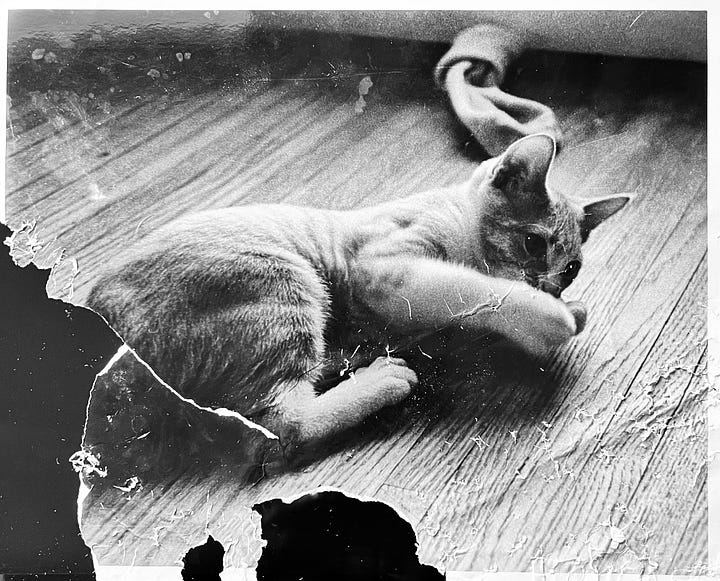
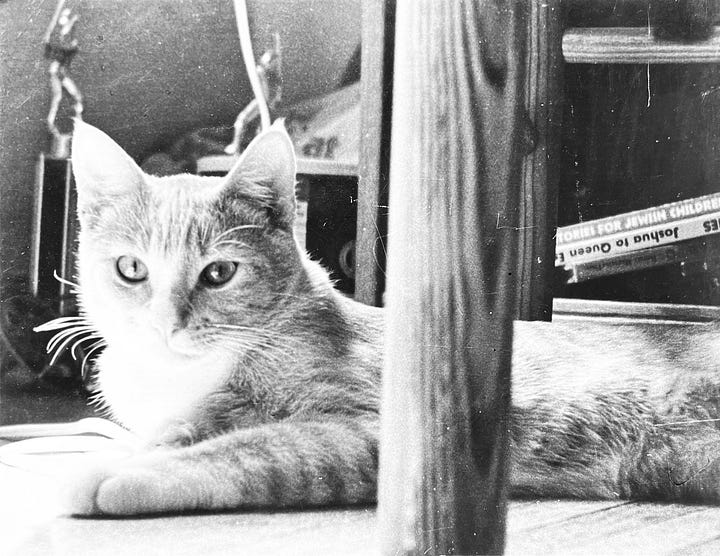
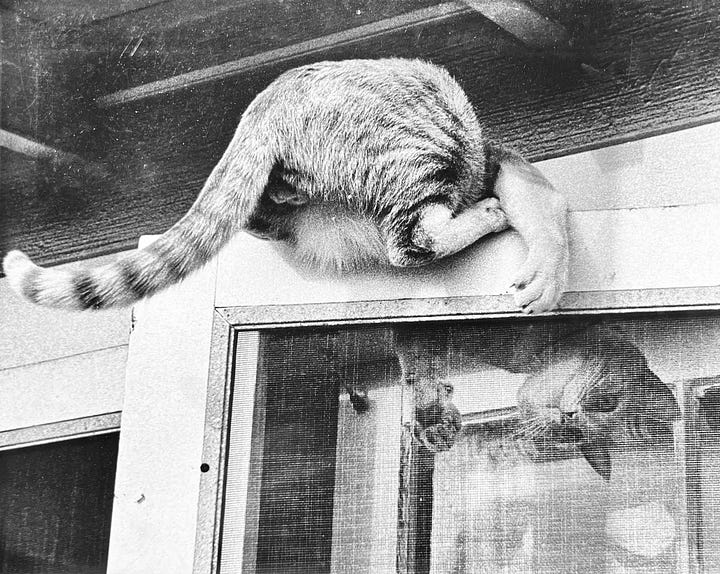

All the gear was on the dry side of the darkroom. I can say with certainty that gear was central to the seduction. The enlarger was the star. Pick your favorite negative from the proof sheet, stick it in the enlarger, place a piece of photography paper on the easel below and set a timer to exposure the paper to light.
It’s all about the light. The longer the exposure, the darker the image. I’d make a test strip from a scrap of paper to figure out the right exposure before exposing a full sheet. Photography paper was expensive.
My 15 year old brain loved the juxtaposition of this rose against barbed wire in Wattles Park up the street from my house. I worked hard to get this one right, here’s the test strip:

The emulsion artifacts from chemical changes weren’t on the original print; they’re from sitting in a box the past 40 years:
Top gear of course is the camera; that’s where the process started. You might remember the Canon AE-1. Canon had a long ad campaign of tennis players and photographers where the ad concluded switching roles, with the player picking up the camera to show how easy it was.
The AE-1 featured a fully automatic mode. But photographers make art and art doesn’t do easy and so I used the cheaper AT-1 which required you to manually set the size of the lens opening or aperture/f-stop as well as the shutter speed before each shot.
After Jay and Roses, I moved onto buildings. On weekends we’d ride the bus all over LA hunting for cool buildings to shoot.
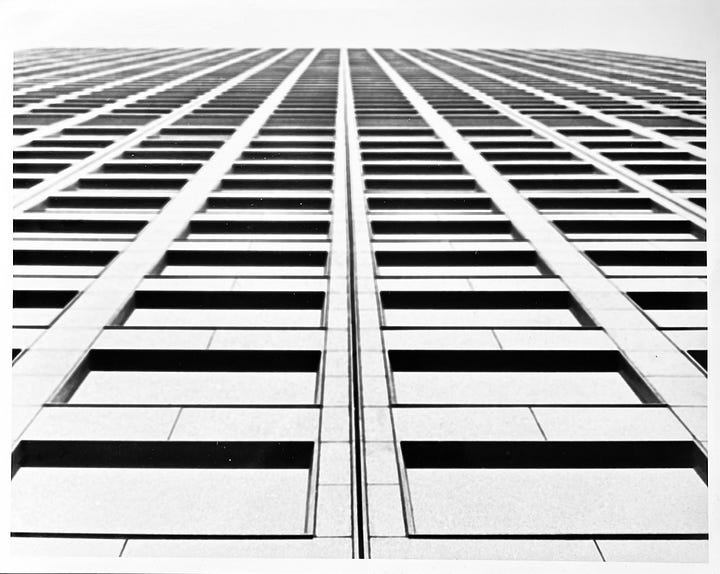
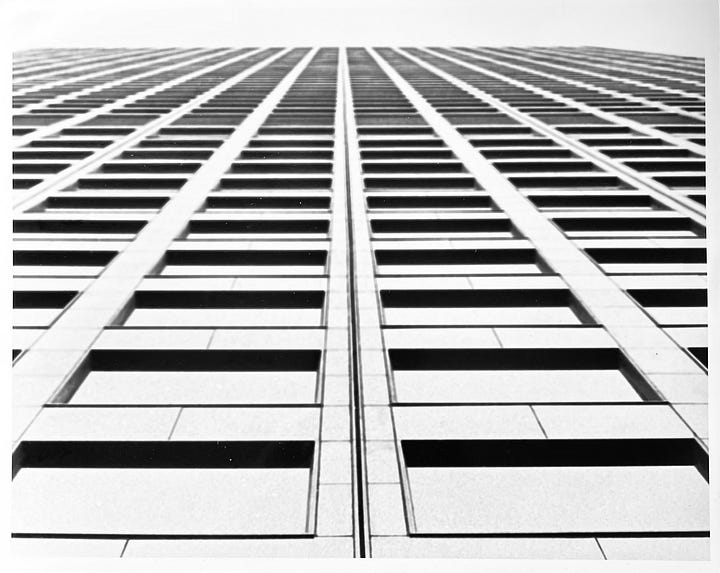
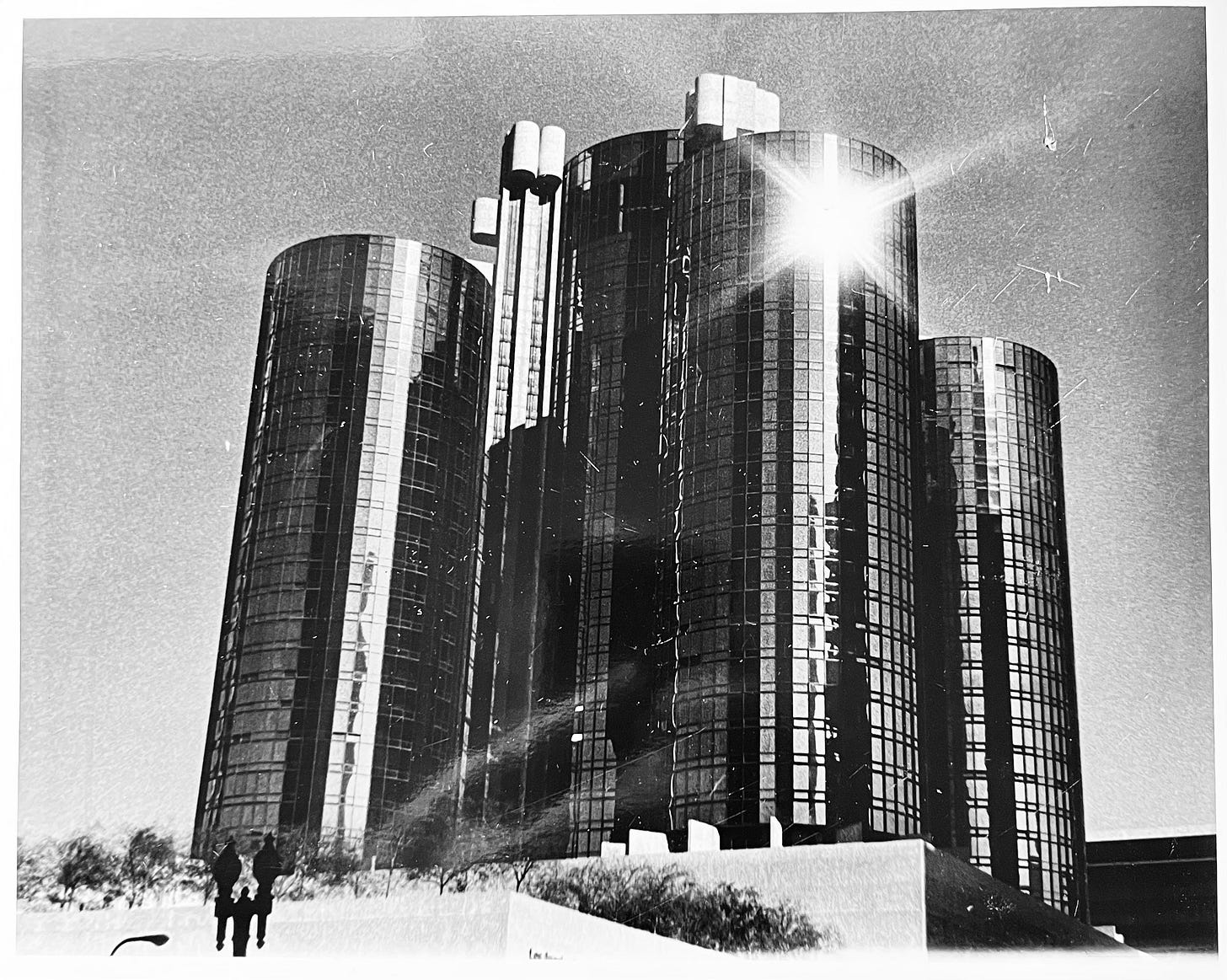
To get this last shot, I needed a piece of gear called a cable release. I saved up to buy it at a photography store downtown. It screwed into the shutter button and kept it open as long as you held it down. This let you keep the camera steady on a tripod (or in this case perched precariously on the edge of my roof) so it wouldn’t move during a long exposure.
I took a whole roll of pictures at different shutter durations to get this shot of the Hollywood lights with a car driving up my street from Sunset Boulevard.
In the end, I was really seduced by the light, not the dark.
Photography is a good metaphor for the development of technology over the past 50 years. Color film and cameras soon replaced black and white. Developing film became automated with 1 hour photo processing and the genius of the Polaroid. Digital cameras took over with rapid increases in quality and resolution and editing software. Miniaturization made storage and sensors ever smaller and soon your phone was the best camera you ever had. The internet and social media enabled instant sharing and the proliferation of images that feed today’s AI image models along with advances like augmented reality.
There are more picture and stories in the box of B&W prints I found. Let me know if you like this one and I might dust off some more off to write about.
best, Andrew




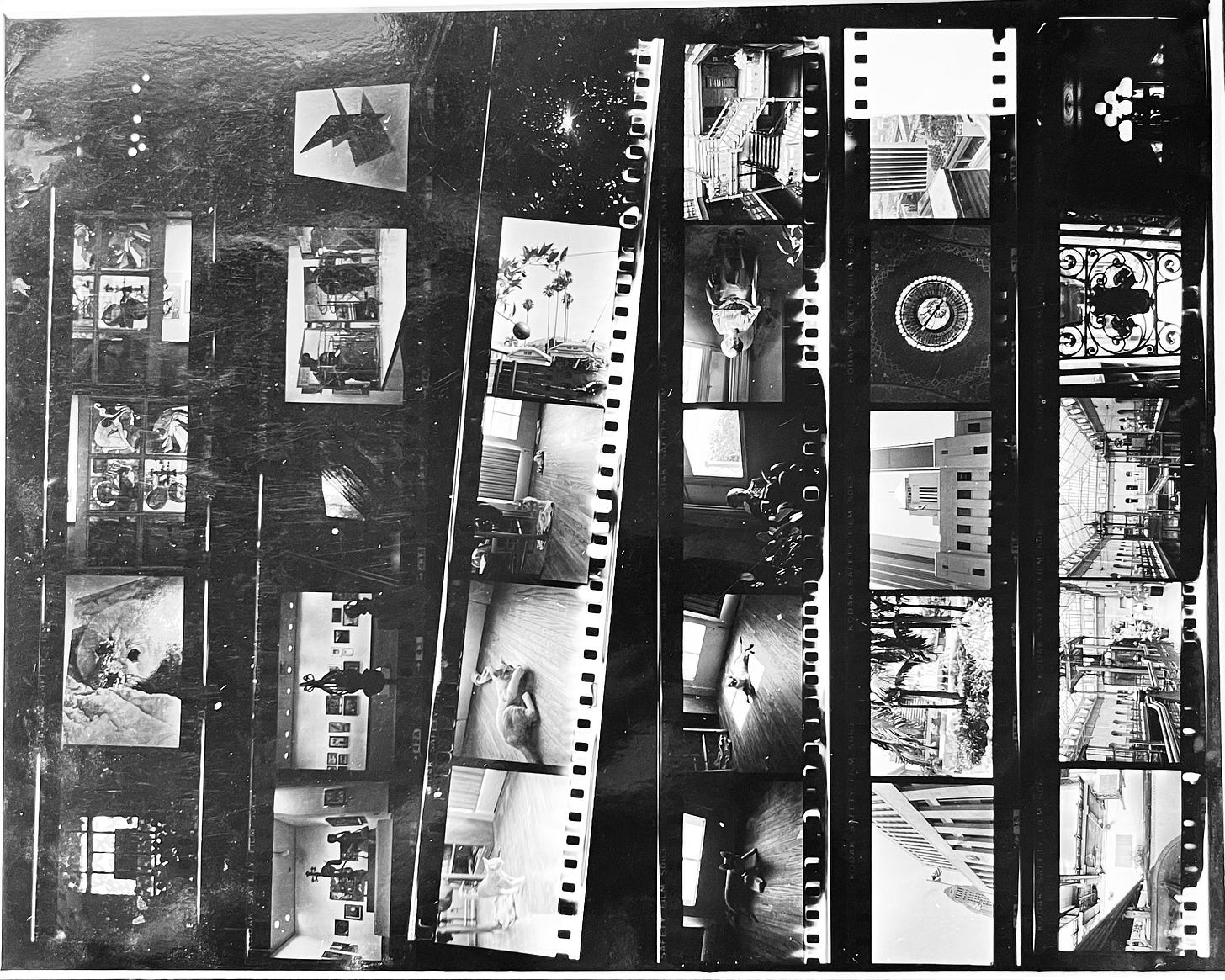

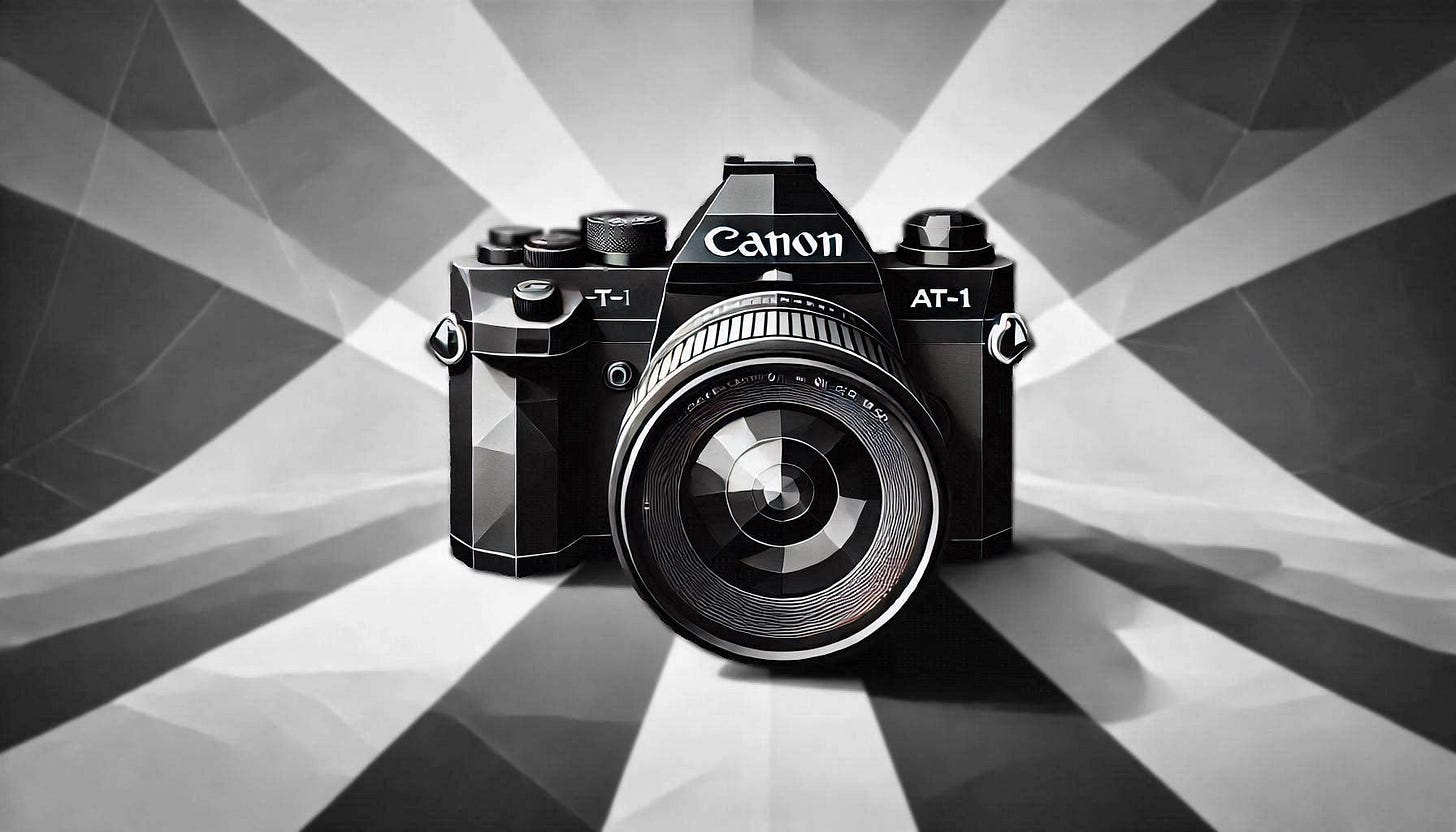
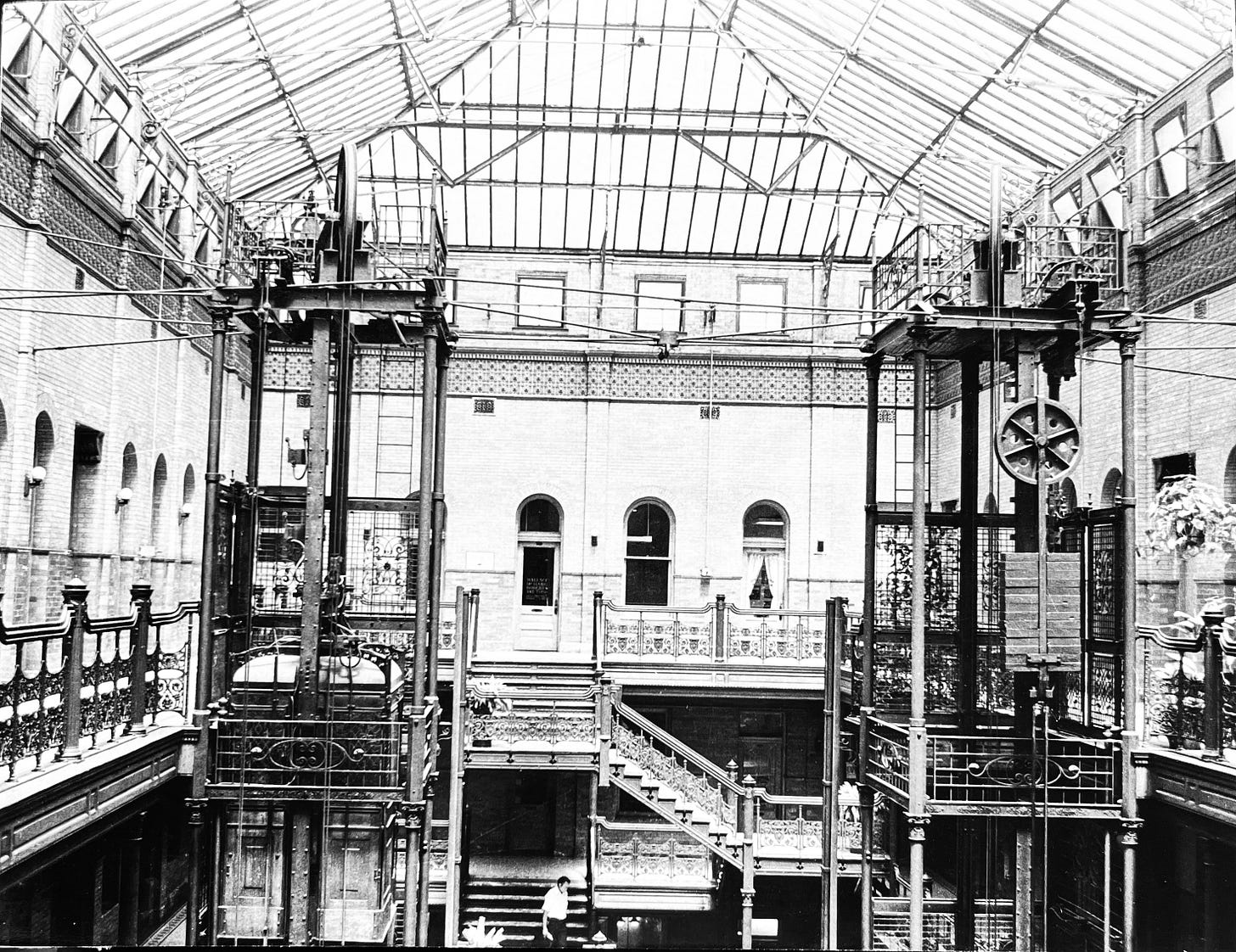
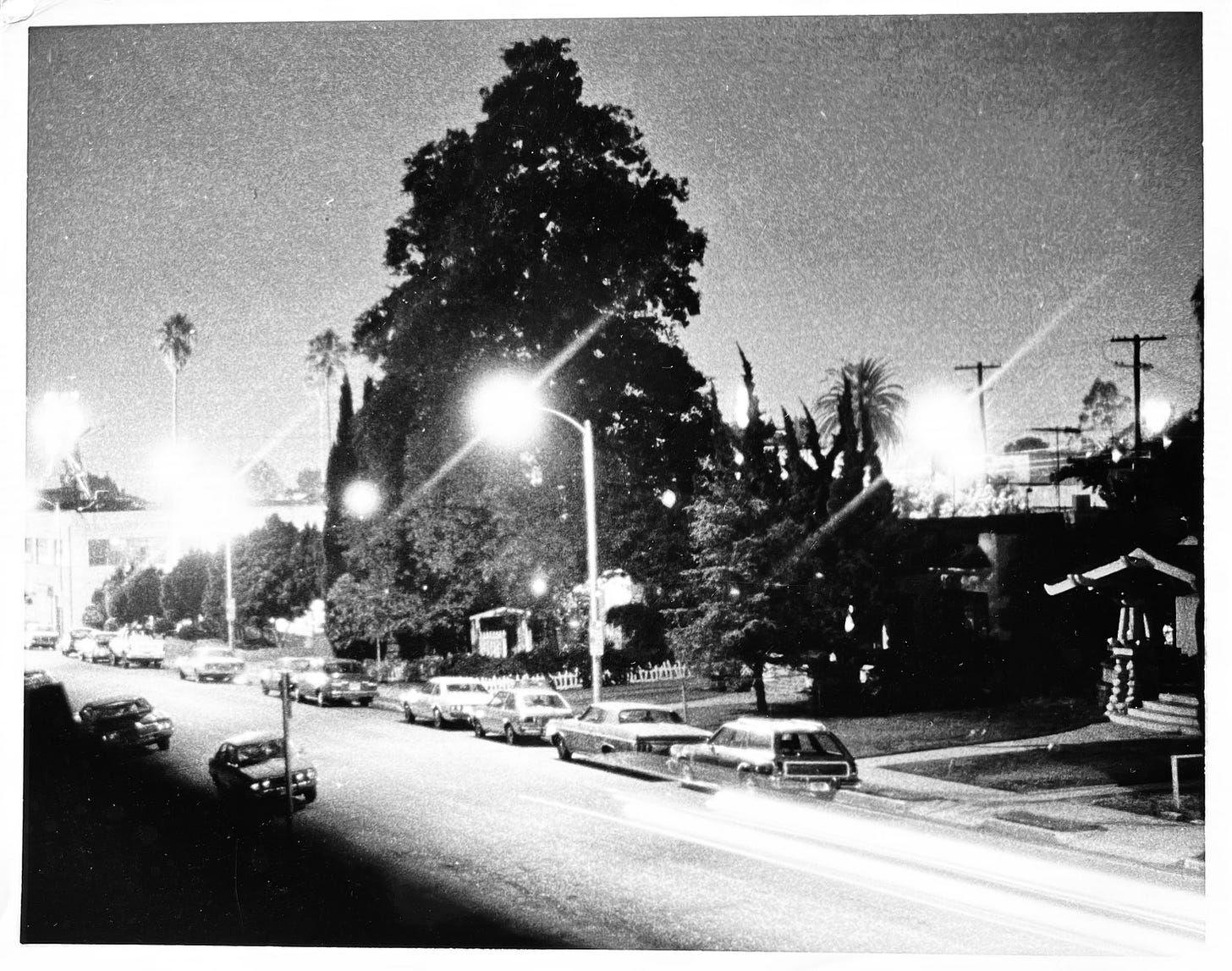
Wow an article on photography old style. Been there done that. I started out with a Pentax Spotmatic 35mm, did the darkroom schtick, joined the National Photographic association, was enthused by a guy called Bud Watson who would paddle in a canoe up north, take pics on a 5x7 camera then sell them to corporate boardrooms for an enormous amount of money. Granted he did his own development, prints and even mounted the huge images, some 20ft long in a concave frame. Inspiring. So then I go into large format photography using 8x10... long story. Many years later I started a tech mag PhotoSource, then an art mag, Canadian Photographer. First issue Polaroid 20x24 and 5'x7' cameras and Andy Wharhol polaroid images, considered art by many. What a trip...
My friend Jay took photography, but I didn't. He was the only one in our little crew who did, whereas I gravitated heavily toward visual art classes. That might seem kind of odd since composition is so important in photography, but I just wasn't interested in all the technical stuff, I think. It seemed more like a trade than an art to my 15 year old ass.
"Taking a picture was quite the process 45 years ago, and mastering that process was part of the seduction."
Indeed. All of the work you put into enlarging a photo, just to see how it looked bigger? People do that now by touching a screen and making the space between their index finger and thumb bigger. We didn't used to know how to do magic, but now we do.
Looking back, the most meaningful activities in my life took a ton of time to do. I wonder how much baby we are throwing out with the bathwater here.